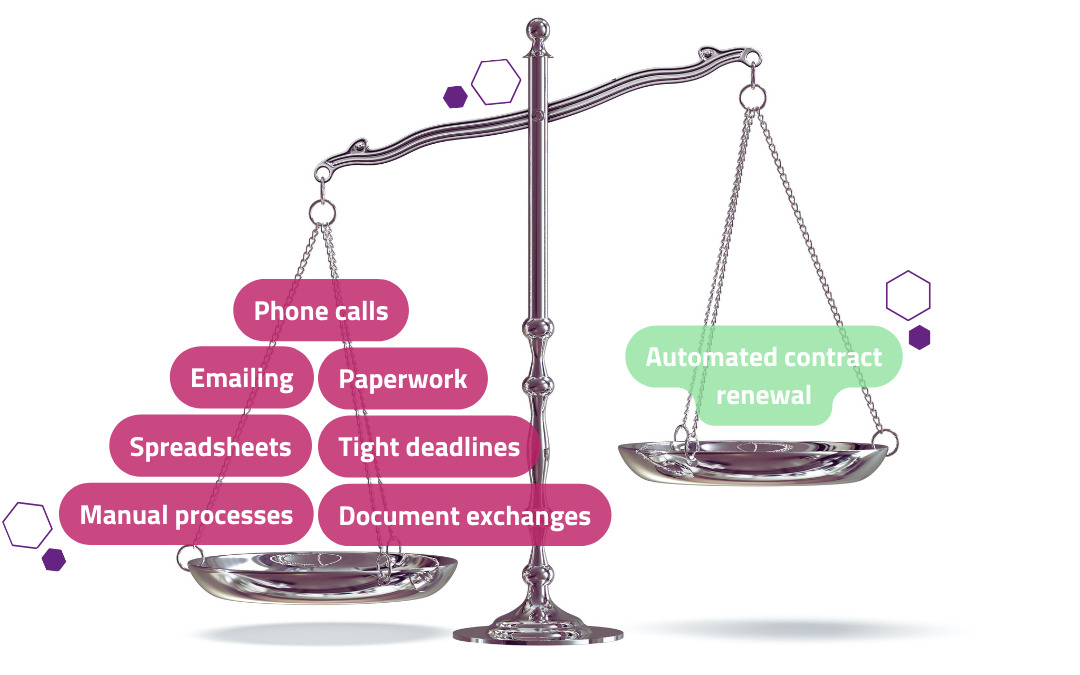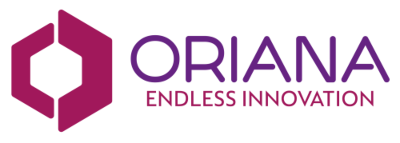The rate of contract renewals is rapidly declining, with Gartner predicting that by 2025, 60% of finance and accounting outsourcing contracts won’t be renewed due to outdated pricing models hindering digitization and process improvement. This necessitates a fresh approach to contract renewal that requires creativity, effort, and investment.
In this blog post, we share valuable tips and best practices for enhancing your team’s contract renewal workflows. We discuss the role of introducing automation, the importance of thorough evaluation and meticulousness, as well as the positive results automation can bring about.
Why is contract renewal important?
Let’s start with the basics: contract renewal is critical for ensuring that contracts are renewed on a consistent basis. All organizations know that contract renewals are vital for maintaining business relationships, but many struggle with large databases, manual processes, and oversight that can lead to costly mistakes or missed renewals.
What these companies need to aim for is to establish a solid contract renewal workflow that addresses these issues by assigning key responsibilities, keeping track of upcoming expirations, and allowing time for renegotiation or re-entering negotiations before a contract churns.
Reasons to automate the contract renewal process
Manual contract renewal management using email and spreadsheets is traditionally disjointed, time-consuming, and error-prone. This invariably complicates the renewal process, especially for large companies dealing with a multitude of contract types that demand frequent maintenance. As a result, countless hours are spent on tasks like document exchanges, updates, calls, emails, and so on.

Implementing automation into contract renewal workflows not only saves time but also prevents missed opportunities, manual errors, paperwork delays, and financial losses. A customizable contract renewal workflow tool can send timely alerts regarding contracts that require attention or renewal and keeps all stakeholders up to date. All relevant information, such as contracts, templates, and databases are centralized in one place, so once the automated workflow is established, these processes run seamlessly without any manual intervention.
Sounds ideal? Let’s see how to get there!
Tips for automating contract renewal
Automation can be resource-intensive, so it’s important to make the right decisions, at the right time. To successfully automate contract renewal and avoid downfalls, it’s important to follow best practices.
1. Start with a thorough evaluation of current processes, needs, and goals
Like any process improvement, automating contract renewals represents an investment of resources. To make the most out of the process, you need to start with a careful evaluation of current processes, needs, and goals.
Although automating contract renewals will require significant upfront work, it will result in time savings and a smoother process later on. Think of it as ‘short-term pain for long-term gain’ — teams that don’t skip this step ultimately find that the initial effort justifies the long-term benefits.
2. Think about personalization
Personalization is another critical aspect you’ll need to think about when introducing automation. While some clients may welcome automated emails and follow-ups, others, depending on demographic factors, such as cultural background or age group, may prefer personalized touches, such as handwritten letters or direct calls when it’s time to renew. Without keeping this in mind, there is a risk of missing opportunities due to the lack of personalized communication.
Automating all communication with contacts is not the way to go. Recognizing which clients require a more personalized approach is vital, particularly for substantial contract relationships that benefit from in-person nurturing rather than automated communications. A customizable contract renewal tool, such as low-code software will allow you to categorize clients based on their preferred communication and receive notifications when the outreach is due.
3. Maintain meticulous quality control to prevent errors
Lastly, meticulous attention to detail is key. It’s important to remember that automation is not a catch-all solution and does not completely rule out errors. A single typo or broken link in automated processes may not significantly impact one client, but if it’s inadvertently sent to a larger group of clients, it can harm the company’s reputation and might require substantial remediation efforts.
The best approach to prevent such scenarios and minimize mistakes is maintaining meticulous quality control. Since automation already helps save time and allocate resources more efficiently, having human oversight to review processes requires relatively little effort but plays a crucial role in ensuring that everything runs smoothly.
The results of automated contract renewal processes
An automated contract renewal workflow offers several advantages, including significant time savings that can be reallocated to strengthen existing relationships or explore new contracts.
Using automation helps ensure that contracts are renewed promptly, with minimal manual intervention and overall, a lower risk of overlooking critical details that might result in lost opportunities.
Conclusion
Ensuring a continuous income is a crucial aspect of any organization’s routine. Using automation to optimize contract renewal workflow is one of the most effective approaches to maximize your company’s earnings without being consumed by a sea of renewal tasks.
A proactive contract renewal strategy, powered by low-code software streamlines the process, frees up time, and optimizes profitability for businesses. By embracing automation while recognizing opportunities for customization, organizations can effectively navigate the complexities of contract renewals, safeguard their income streams, and foster long-term client relationships.



